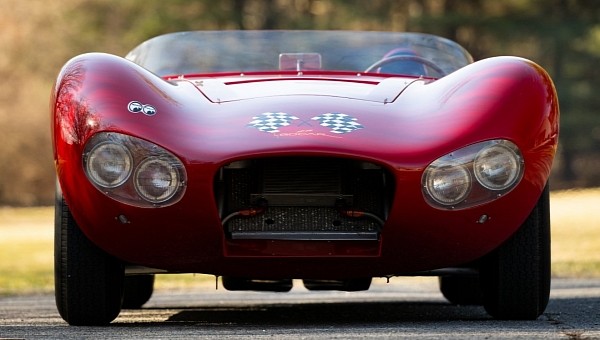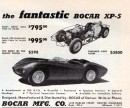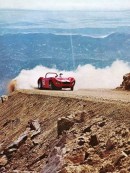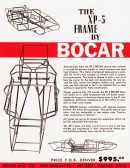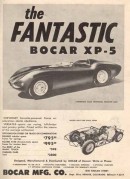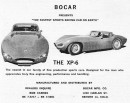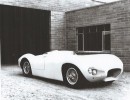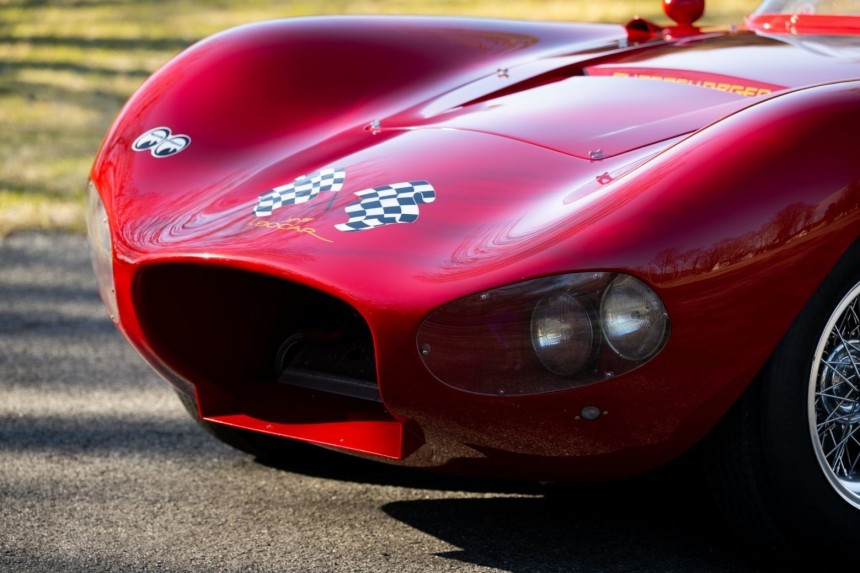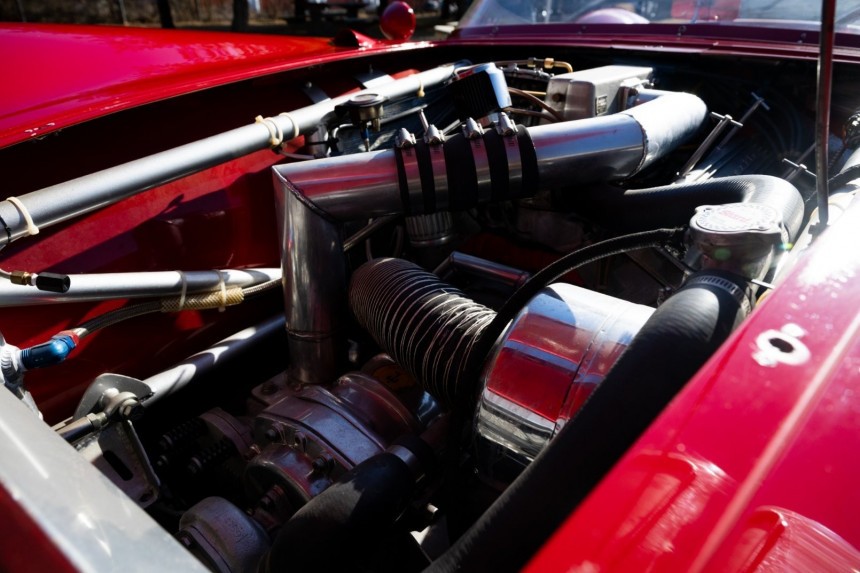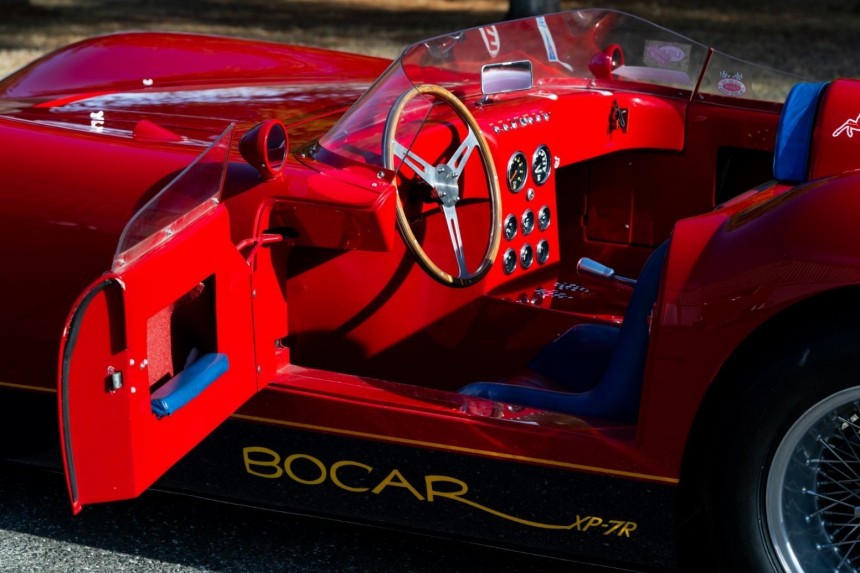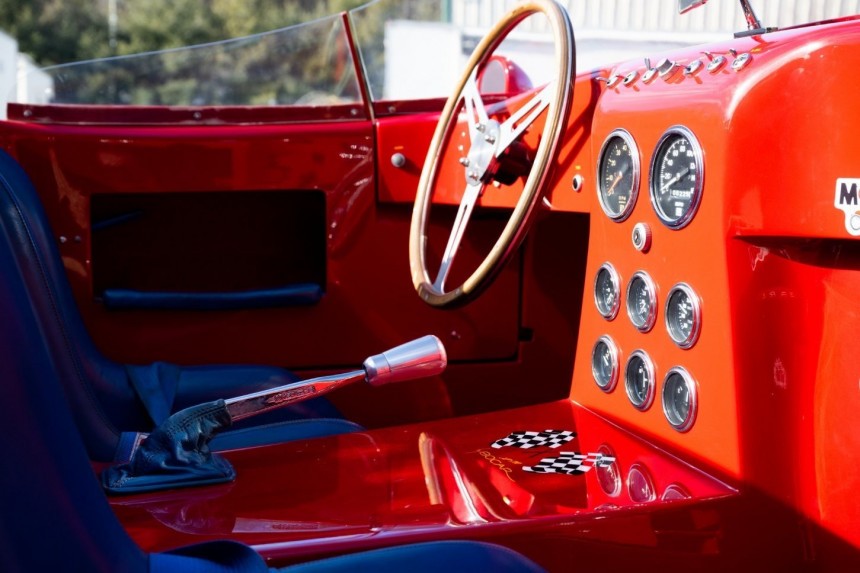In the early days of motorcars, US-built automobiles were infamously laughed at for being terrible at cornering. The Old World gearheads could not see the matter from the Detroit perspective. Similarly, the boys from the States didn’t see the point of twisting a perfect race track. Car racing was about getting to the finish line first – usually a quarter of a mile later than the starting point.
Things began to change after WWII – or so urban legends claim – when Uncle Sam’s GIs got hands-on experience with Europe’s sportscars. “Hhhhmmmm, maybe there is something about this fun steering driving,” they must have thought. “If only these cars had some power….”
The budding idea haunted a generation, spawned the Corvette, culminated with the Cobra, and cast many long-forgotten brands over the open sky of piston dreamers. The Woodill Wildfire was among the first American-made sportscars to use a fiberglass body, but other builders flirted with that idea.
Have you ever heard of a Bocar? No, it’s not a misspelling of “Mopar” – even if the two letters are reasonably close on a standard US-layout keyboard. It was a dual-purpose sportscar from the late '50s, and it is almost unknown for two reasons.
First, an aeronautics engineer from Colorado built it in a workshop. And second, the brand lasted four years, between 1958 and 1962. Around Christmas of 1961, the workshop was devastated by a fire. Unmetaphorically, the Bocar went down in flames, leaving behind a small number of custom-made examples.
The founder of Bocar Manufacturing Co. was a racing enthusiast: Bob Carnes, from whose name the car company was christened. Bo(b) Car(nes). Bocar. He had tasted the Detroit V8 power in a nimble, well-balanced European chassis since ’53, building and racing a Jaguar XK 120 with a Cadillac engine.
It was a good thing, and he called it the Jagillac. He was just as fond of pairing words as combining car parts, so he made his own sportscar. That’s not as easy as it sounds, especially when you lack the chassis, engine, body, suspensions, brakes, steering, electricals, and the millions to manufacture them.
The alternative was to outsource the components and have the body custom-made. Glass-reinforced polyester – the era’s wonder-kid prescription for an automotive diet – was used to keep the whole assembly lightweight. The skeleton was an in-house airframe design – Carnes was an aeronautically-educated racer, after all.
The gallery holds a period ad for one of the company’s models, the XP-5 (XP stands for eXperimental Production). Although Carnes boasts about being “probably the world’s only example of airframe used in automotive construction,” it was just marketing bait. The 1955 300SL from Germany is a famous example of the super-strong concept. Chrysler had a distantly similar idea in 1934 with the Airflow.
Nonetheless, the engineering was solid, and the short tubular frame was very sturdy – claiming a high enough strength to withstand a 1,000-hp engine. Where exactly would such an engine be found during that day is a question for history (especially one that would fit inside a Bocar). The powerplants were much less potent and were mounted between the driver and the potential passenger for better weight distribution.
Bocar bragged about this as if it was a revolutionary discovery and even claimed that it gave its cars similar behavior to a rear-engined automobile. Overall, the results were surprising – the cars weighed around 2,000 lb (900 kg), with some later models going as low as 1,750 lb (800 kg).
The Bocars came in two wheelbase sizes – the standard 91-inch (2.31 meters) or the 102 variant (2.59 meters). To keep things simple, the vehicles were open-top designs (roofs were offered at cost): 34 inches tall (86 centimeters, including the custom-cut windshield) and very fast, thanks to a functional-designed shape. The gallery is a much more accurate description than words.
Carnes used his racing experience to the fullest when he devised his cars: the engine was slightly offset to the right to counter the weight of the driver. Although the automobile was road-leag and could be used as a daily driver without much hassle, it was built for one purpose: racing. The video offers a precious insight into the history of this elusive brand.
And racing it did – it finished second in 1960 at Daytona, a debut forever inscribed in automotive archives as the first televised race held at the famous beach. The Bocar took the podium and broke the speed record, clocking 175 mph (282 kph).
Not bad at all for a car built in a neighborhood workshop, with a VW front axle, Buick brakes, Jaguar wheels, a Corvette engine, and no history. No two cars were identical; the company invited would-be buyers to Denver for tailoring.
Literally, the driver’s body mold would be used to build the seat, and the windshield would be sized accordingly. The already-small air deflector would be proportioned to divert airstreams above the head of the car’s occupants.
Sports Car Illustrated tested a naturally-aspirated 283-CID (4.6-liter) Corvette V8 car in ’59 and went all head over (w)heels for the six-second 0-60 mph (97 kph) and the 150 mph top speed (241 kph) of the 240-hp (243 PS) XP-5. Sadly, the Bocar exhilaration was short-lived. After the fire in ’61, the shop was closed and the company ceased operations.
The production numbers are foggy – sources speculate figures ranging from 30 to close to 200 units being built in the two years. Most models were XP-5s, but there were some later variants.
The last was an absolute abomination – a 350 cubic-inch (5.7 liters) supercharged Corvette roasting the rear wheels with 650 hp (659 PS). The Muncie M-22 Rock Crusher four-speed takes the punishment inducted by the crank-driven GMC 4-71 supercharger. The odometer reads 8,225 miles (13,237 km), and the engine is allegedly the original.
That swansong Bocar is for sale – and it doesn’t come cheap at all. $280,000 is not exactly a bargain; then again, a piece of automobile history is beyond the comprehension of a mere price tag. Although the car's history is not disclosed, the gallery contains a rare photo from when this particular example was still under construction.
The budding idea haunted a generation, spawned the Corvette, culminated with the Cobra, and cast many long-forgotten brands over the open sky of piston dreamers. The Woodill Wildfire was among the first American-made sportscars to use a fiberglass body, but other builders flirted with that idea.
Have you ever heard of a Bocar? No, it’s not a misspelling of “Mopar” – even if the two letters are reasonably close on a standard US-layout keyboard. It was a dual-purpose sportscar from the late '50s, and it is almost unknown for two reasons.
The founder of Bocar Manufacturing Co. was a racing enthusiast: Bob Carnes, from whose name the car company was christened. Bo(b) Car(nes). Bocar. He had tasted the Detroit V8 power in a nimble, well-balanced European chassis since ’53, building and racing a Jaguar XK 120 with a Cadillac engine.
It was a good thing, and he called it the Jagillac. He was just as fond of pairing words as combining car parts, so he made his own sportscar. That’s not as easy as it sounds, especially when you lack the chassis, engine, body, suspensions, brakes, steering, electricals, and the millions to manufacture them.
The gallery holds a period ad for one of the company’s models, the XP-5 (XP stands for eXperimental Production). Although Carnes boasts about being “probably the world’s only example of airframe used in automotive construction,” it was just marketing bait. The 1955 300SL from Germany is a famous example of the super-strong concept. Chrysler had a distantly similar idea in 1934 with the Airflow.
Nonetheless, the engineering was solid, and the short tubular frame was very sturdy – claiming a high enough strength to withstand a 1,000-hp engine. Where exactly would such an engine be found during that day is a question for history (especially one that would fit inside a Bocar). The powerplants were much less potent and were mounted between the driver and the potential passenger for better weight distribution.
The Bocars came in two wheelbase sizes – the standard 91-inch (2.31 meters) or the 102 variant (2.59 meters). To keep things simple, the vehicles were open-top designs (roofs were offered at cost): 34 inches tall (86 centimeters, including the custom-cut windshield) and very fast, thanks to a functional-designed shape. The gallery is a much more accurate description than words.
Carnes used his racing experience to the fullest when he devised his cars: the engine was slightly offset to the right to counter the weight of the driver. Although the automobile was road-leag and could be used as a daily driver without much hassle, it was built for one purpose: racing. The video offers a precious insight into the history of this elusive brand.
Not bad at all for a car built in a neighborhood workshop, with a VW front axle, Buick brakes, Jaguar wheels, a Corvette engine, and no history. No two cars were identical; the company invited would-be buyers to Denver for tailoring.
Literally, the driver’s body mold would be used to build the seat, and the windshield would be sized accordingly. The already-small air deflector would be proportioned to divert airstreams above the head of the car’s occupants.
The production numbers are foggy – sources speculate figures ranging from 30 to close to 200 units being built in the two years. Most models were XP-5s, but there were some later variants.
The last was an absolute abomination – a 350 cubic-inch (5.7 liters) supercharged Corvette roasting the rear wheels with 650 hp (659 PS). The Muncie M-22 Rock Crusher four-speed takes the punishment inducted by the crank-driven GMC 4-71 supercharger. The odometer reads 8,225 miles (13,237 km), and the engine is allegedly the original.
That swansong Bocar is for sale – and it doesn’t come cheap at all. $280,000 is not exactly a bargain; then again, a piece of automobile history is beyond the comprehension of a mere price tag. Although the car's history is not disclosed, the gallery contains a rare photo from when this particular example was still under construction.
